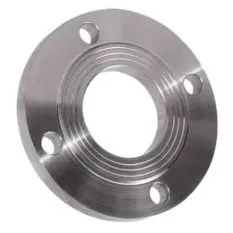-
Cangzhou Yulong Steel Co., Ltd.
-
Phone:
+86 13303177267 -
Email:
admin@ylsteelfittings.com
- English
- Arabic
- Italian
- Spanish
- Portuguese
- German
- kazakh
- Persian
- Greek
- French
- Russian
- Polish
- Thai
- Indonesian
- Vietnamese
- Zulu
- Korean
- Uzbek
- Hindi
- Serbian
- Malay
- Ukrainian
- Gujarati
- Haitian Creole
- hausa
- hawaiian
- Hebrew
- Miao
- Hungarian
- Icelandic
- igbo
- irish
- Japanese
- Javanese
- Kannada
- Khmer
- Rwandese
- Afrikaans
- Albanian
- Amharic
- Armenian
- Azerbaijani
- Basque
- Belarusian
- Bengali
- Bosnian
- Bulgarian
- Catalan
- Cebuano
- China
- China (Taiwan)
- Corsican
- Croatian
- Czech
- Danish
- Esperanto
- Estonian
- Finnish
- Frisian
- Galician
- Georgian
- Kurdish
- Kyrgyz
- Lao
- Latin
- Latvian
- Lithuanian
- Luxembourgish
- Macedonian
- Malgashi
- Malayalam
- Maltese
- Maori
- Marathi
- Mongolian
- Myanmar
- Nepali
- Norwegian
- Norwegian
- Occitan
- Pashto
- Dutch
- Punjabi
- Romanian
- Samoan
- Scottish Gaelic
- Sesotho
- Shona
- Sindhi
- Sinhala
- Slovak
- Slovenian
- Somali
- Sundanese
- Swahili
- Swedish
- Tagalog
- Tajik
- Tamil
- Tatar
- Telugu
- Turkish
- Turkmen
- Urdu
- Uighur
- Welsh
- Bantu
- Yiddish
- Yoruba

Nov . 07, 2024 06:13 Back to list
Butt Weld Fittings Essential Guide for Piping Applications and Installations
Understanding Butt Weld Fittings An Essential Component in Piping Systems
In various industrial applications, the integrity and reliability of piping systems are paramount. One of the critical components that play a vital role in ensuring the seamless operation of these systems is the butt weld fitting. These fittings are essential for creating permanent connections between pipes and are designed to withstand high pressure and temperature, making them indispensable in the fields of oil and gas, chemical processing, and water treatment.
What are Butt Weld Fittings?
Butt weld fittings are piping components that are welded to the ends of two pipes, allowing them to form a continuous flow. Unlike other types of fittings that use mechanical connections such as flanges or threading, butt weld fittings provide a joint that is integral to the pipe itself. This type of connection is achieved by aligning the two pipe ends and then welding them together using a procedure known as butt welding. This combination of design and welding technique results in a strong and durable joint that can handle the stresses of high-pressure operations.
Types of Butt Weld Fittings
Butt weld fittings come in various shapes and sizes, each designed for specific applications
1. Elbows Used to change the direction of flow in the piping system, elbows can be found in 45-degree or 90-degree configurations.
2. Tees These fittings allow branching of the flow, creating a T-shaped connection that lets fluid flow in three different directions.
3. Reducers Used to connect pipes of different diameters, reducers help to facilitate smooth transitions and control flow rates within a system.
4. Cap Fittings Designed to seal the ends of pipes, caps are crucial for maintaining system integrity and preventing leaks.
5. Stub Ends Often used with flanges, stub ends provide a way to join a flange to a pipe using a weld, facilitating easy disassembly if maintenance is needed.
Advantages of Using Butt Weld Fittings
1. Strength and Durability The welded joints created by butt weld fittings are often as strong as, if not stronger than, the pipes themselves. This provides a level of reliability that is critical in high-pressure applications.
butt weld fittings

2. Improved Flow Efficiency Because the design of butt weld fittings allows for smooth transitions with minimal obstructions, they enhance flow efficiency, reducing turbulence and energy loss.
3. Leak Resistance The permanent nature of welded joints means that butt weld fittings are less likely to leak compared to mechanical fittings over time, which may loosen or degrade.
4. Versatility Available in a wide range of materials, including stainless steel, carbon steel, and alloys, butt weld fittings can be tailored to suit various media—be it gas, liquid, or corrosive substances.
Installation Considerations
While butt weld fittings provide numerous advantages, proper installation is crucial for ensuring their effectiveness. Weld quality is paramount and should meet industry standards to prevent failures. Additionally, factors such as proper preparation of the pipe ends, the correct welding technique, and post-weld heat treatment can significantly affect the joint's integrity. Therefore, it is essential to employ skilled professionals equipped with the right tools and techniques to execute the installation appropriately.
Applications of Butt Weld Fittings
Butt weld fittings find applications in a multitude of industries
- Oil and Gas Used extensively in pipelines that transport oil and gas, where durability and leak resistance are critical.
- Chemical Processing Employed in systems that handle corrosive substances, where the integrity of the piping is non-negotiable.
- Water Treatment Utilized in water supply and wastewater treatment plants, ensuring safe and efficient flow of water.
- Food and Beverage In the food industry, where hygiene standards are paramount, butt weld fittings help maintain a sterile environment.
Conclusion
Butt weld fittings are a fundamental part of piping systems across various industries. Their ability to create strong, durable, and leak-resistant connections makes them a preferred choice for engineers and contractors. Understanding the different types, advantages, and installation requirements of butt weld fittings ensures that they are used effectively, contributing to the overall safety and efficiency of piping systems. As technology evolves, the importance of these fittings will only continue to grow, underscoring their role in supporting the infrastructure of modern industry.
Latest news
-
ANSI 150P SS304 SO FLANGE
NewsFeb.14,2025
-
ASTM A333GR6 STEEL PIPE
NewsJan.20,2025
-
ANSI B16.5 WELDING NECK FLANGE
NewsJan.15,2026
-
ANSI B16.5 SLIP-ON FLANGE
NewsApr.19,2024
-
SABS 1123 FLANGE
NewsJan.15,2025
-
DIN86044 PLATE FLANGE
NewsApr.19,2024
-
DIN2527 BLIND FLANGE
NewsApr.12,2024
-
JIS B2311 Butt-Welding Fittings LR/SR 45°/90° /180°Seamless/Weld
NewsApr.23,2024











